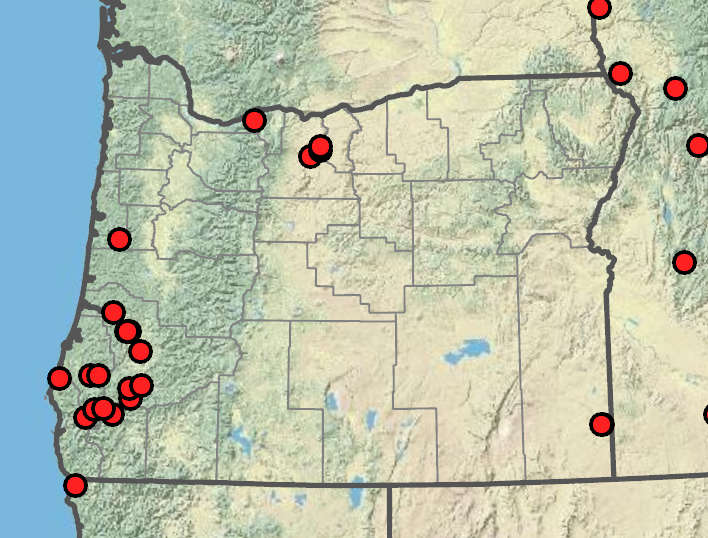Muhlenbergia mexicana
(synonym of Muhlenbergia glomerata)
wirestem muhly
0.5–2 mm thick; much branched above the base, not nodulose;
internodes dull, puberulent or glabrous for most of their length, sometimes strigose immediately below the nodes.
blades 2–20 cm × 2–6 mm; flat, scabrous or smooth, those of the secondary branches similar in length and width to those of the main branches.
terminal and axillary, 2–21 × 0.3–3 cm; dense, appressed or diverging up to 30° from the inflorescence axis;
primary branches 0.3–5.5 cm × over 0.1 mm.
1.5–3.8 mm, often purple-tinged.
subequal, 1.5–3.7 mm, approximately as long as or slightly shorter than the lemmas, 1-veined, tapering from the bases to the acuminate tips; awnless or awned; awns; if present; to 2 mm.
1.5–3.8 mm, lanceolate, pubescent on calluses and lower portion of the midveins and margins;
hairs shorter than the florets; less than 1.5 mm long;
tips minutely scabrous, acuminate; awnless or awned;
lemma awns 0–10 mm.
0.3–0.5 mm; yellowish to purplish.
=40.
Muhlenbergia mexicana
Throughout North America. 2 varieties.
Muhlenbergia mexicana flowers relatively late in summer after river levels drop. It is seldom collected. The similar M. andina has lemma hairs about as long as the lemma body.
Barbara Wilson, Richard Brainerd, Nick Otting
- Local floras:
BC,
OR,
WA
- Local Web sites:
Flora NW,
PNW Herbaria
WildflowerSearch
iNaturalist (observations)
USDA Plants Database
- LBJ Wildflower Center
- SEINet
- Plants of the World Online
- Encyclopedia of Life
- Wikipedia
- Google Image Search


